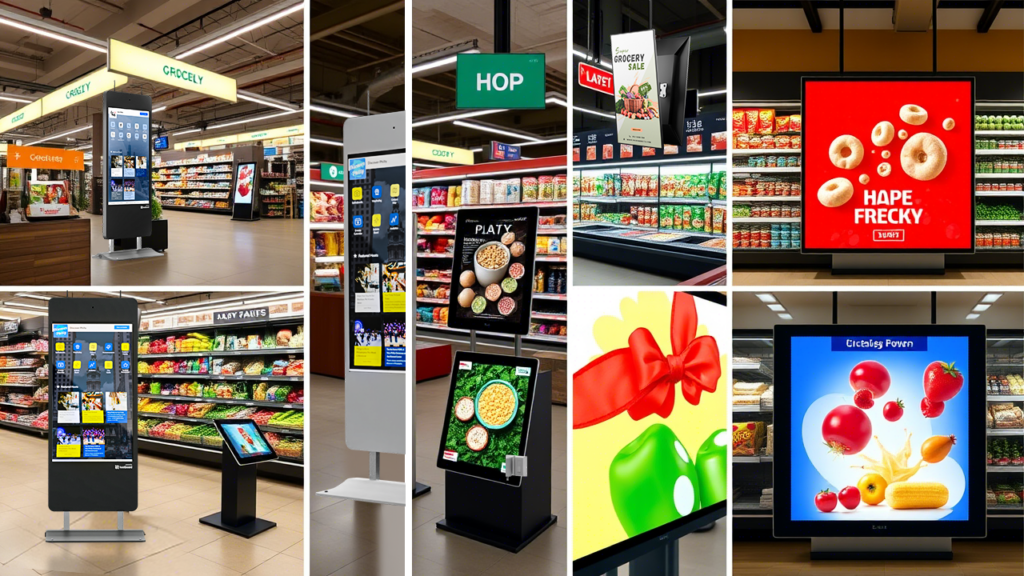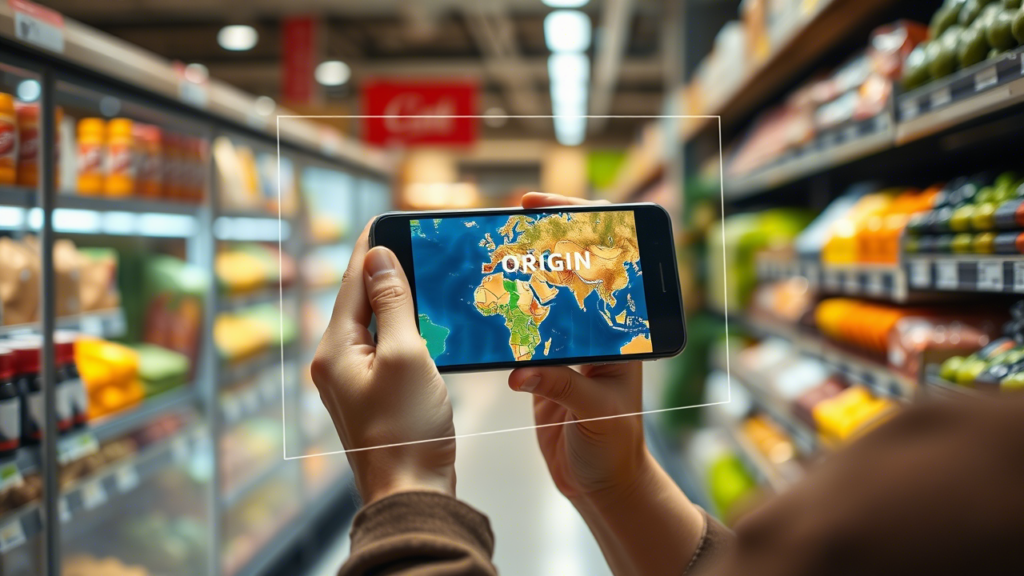Let’s face it, food labels can be confusing. Those tiny boxes crammed with ingredients, percentages, and tiny fonts can leave even the most informed shopper feeling overwhelmed. And with growing concerns about health and wellness, consumers are demanding more transparency and easier access to information about the food they buy.
In today’s world of savvy, health-conscious shoppers, a label alone just doesn’t cut it. People want to know what they’re eating, where it came from, and how it impacts their bodies. They want that information clearly, concisely, and conveniently.
This is where digital displays come in. These in-store communication tools are transforming the grocery aisle, offering a dynamic and engaging way to provide shoppers with the information they crave while enhancing their overall shopping experience.
Why Labels Fall Short (and Why That’s a Big Deal)
Traditional food labels, despite their good intentions, are failing us in a few key ways:
- Information Overload: It’s not just about tiny fonts anymore. Labels are overloaded with information, often presented in a way that’s difficult to understand. One study might say an additive is fine, while another raises concerns. The term “organic” can have different meanings depending on the certifying body. No wonder consumers are confused! In fact, a study by Label Insight found that 95% of consumers are confused about what’s in their food. This confusion is especially prevalent among those most concerned about healthy eating, who are often the most diligent label readers. Digital displays can cut through the noise, providing clear, concise information that empowers shoppers to make informed choices.
- “Hidden” Ingredients: Labeling loopholes allow for ingredients to be disguised under broad terms like “natural flavors” or listed under different names depending on the brand. This lack of transparency erodes consumer trust. Digital displays can counter this by providing detailed breakdowns of ingredients, even visualizing the production process. Imagine a screen showing the exact components of that “natural flavor,” with visuals or even videos of how it’s made. Suddenly, it’s not so mysterious anymore.
Sensory Limitations: Labels rely solely on sight. But what about people with visual impairments? Or those with dyslexia who struggle to process dense text? Digital displays can offer accessibility options like audio descriptions, larger fonts, adjustable contrast, and even QR codes that link to more detailed information online, ensuring everyone has access to the information they need.

Digital Displays: Not Just Facts, But Stories
Digital displays are more than just bigger, fancier labels. They can do so much more!
- Brand Storytelling: Imagine a display for a local farm’s produce. Instead of just listing facts, it shows photos of the farmers, their sustainable practices, maybe even a video of the farm in action. Suddenly, that tomato isn’t just a tomato; it’s part of a story, a connection that builds trust and loyalty in a way a label never could. A study by Nielsen found that 60% of consumers are more likely to buy from brands that have a strong story.
- Interactive “Journeys”: Let’s get creative! Picture a “build your own salad” display. As the shopper selects each ingredient, the screen shows its origin, nutritional info, maybe even a fun fact. It’s engaging, educational, and empowers healthy choices. Research by the International Food Information Council Foundation found that 77% of consumers are interested in learning more about where their food comes from.
Gamification: Who said learning about food has to be boring? A quiz on “spot the hidden sugar” in common products, with rewards or coupons for correct answers. This makes it fun for kids and adults alike, turning the grocery aisle into an educational experience. A study by the University of Colorado found that gamification can increase engagement by up to 60%.

Beyond Transparency: The Grocery Store as a Hub
Digital displays can do more than just inform; they can transform the entire shopping experience:
- Community Building: A display showcasing local events, farmers’ markets, cooking classes using in-season produce… The store becomes a hub for healthy living, not just a place to buy groceries. A survey by Accenture found that 75% of consumers are more likely to shop at stores that are involved in their community.
- Loyalty Programs 2.0: Forget generic coupons. Link displays to personalized offers based on purchase history. “Since you bought those apples, here’s a deal on this delicious apple pie recipe kit…” It’s targeted, relevant, and builds loyalty. A study by Bond Brand Loyalty found that 73% of consumers are more likely to be loyal to brands that personalize their experience.
“Ethical Aisles”: Imagine a section dedicated to sustainably sourced products, highlighted by a display explaining the criteria: fair trade, eco-friendly packaging, etc. This appeals to values-driven shoppers and positions the store as a leader in ethical consumerism. A study by Nielsen found that 73% of consumers are willing to pay more for sustainable products.
Real-World Results: When Displays Do More Than Tell
Let’s look at how some stores are already using digital displays to great effect:
- Whole Foods Market: Their digital shelf labels go beyond the basics, showing sourcing details, certifications, even customer reviews. This has led to a 10% increase in sales of featured products, according to a report by SES-imagotag.
- Kroger: Their interactive kiosks offer personalized recommendations and recipe ideas. This has not only boosted sales but also reduced the number of customer service calls by 15%, freeing up staff for more complex tasks.
Unexpected Successes: A small, independent store uses displays to highlight staff picks, creating a sense of personal connection with shoppers. This has led to a 5% increase in basket size for featured products. A regional chain has a “meet the farmer” video series playing on their screens, building trust and showcasing local partnerships. This has resulted in a 10% increase in sales of locally sourced products.

The Future is Now: Tech That Wows (Responsibly)
Forget those sci-fi visions of the future. The technology to revolutionize the grocery aisle is already here:
- Augmented Reality (AR) Overlays: Imagine shoppers using their phones to scan a product, and an AR overlay appears, showing where it was grown on a map, its carbon footprint, or even how to cook it. This takes engagement to a whole new level. A study by Retail Perceptions found that 61% of shoppers prefer stores that offer AR experiences.
- Smart Shelves: These aren’t just a concept anymore. Shelves that automatically update pricing and product information based on real-time inventory and demand. No more frustrating “out of stock” situations or price discrepancies. A report by McKinsey & Company estimates that smart shelves can reduce out-of-stock situations by up to 50%.
- The “Phygital” Blend: Online shopping has changed our expectations. Displays can bridge the gap: scan an item to see online reviews, compare prices with other stores, or even order out-of-stock items for delivery. A study by Harvard Business Review found that omnichannel shoppers spend 40% more than single-channel shoppers.
Ethical Considerations: With all this data collection comes responsibility. Displays should clearly communicate how customer data is used, prioritize privacy, and avoid creepy tracking. Transparency builds trust, while shady practices erode it. A survey by Pew Research Center found that 81% of Americans feel they have little or no control over the data companies collect about them.

Conclusion
The grocery aisle is evolving, and digital displays are leading the charge. They’re not just about replacing labels; they’re about empowering consumers, enhancing the shopping experience, and building a more transparent, engaging, and sustainable future for the grocery industry.
So, ditch the outdated posters and embrace the power of digital. Your shoppers (and your bottom line) will thank you for it.

